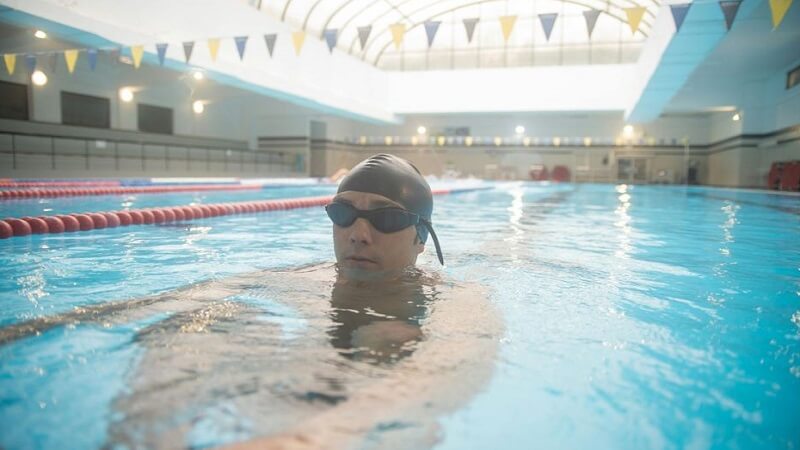In the ever-evolving fitness landscape, trends emerge and then recede, yet some boldly ripple through and redefine the industry. Aquatic workouts, the latest fitness sensation, are indeed causing such transformative ripples among health enthusiasts. Picture this: incinerating calories, defining muscles, and safeguarding joints, all within the serene nurturing of water.
Why Aquatic Exercise is the New Fitness Wave
Aquatic fitness at facilities like Aquatic Performance Training has been gaining momentum within the wellness circle, and rightfully so. It is a vibrant and compelling way to maintain fitness while affording numerous benefits that are challenging to match in a land-based environment. Water’s buoyancy alleviates joint impact, making it a safe haven for those wary of injuries or those grappling with existing ones. The natural resistance of water adds a gratifying challenge, escalating calorie consumption and muscle engagement.
For fitness aficionados hungry for a revitalizing take on exercise, aquatic workouts offer a refreshing alternative to the monotony of gymnasium sessions. The flexibility of water exercises ensures they can be tailored to match various fitness levels and objectives, ranging from gentle regimens for novices to rigorous routines for seasoned athletes. The escalating popularity of these workouts speaks volumes of their effectiveness and allure.
The Unique Advantages of Aquatic Workouts
Aquatic workouts are not just about frolicking in the water; they are a powerhouse for significant fitness milestones. One distinct advantage is their proficiency at torching calories. The resistance borne by the water demands more energy expenditure, thereby intensifying calorie burnout rivaling many traditional regimes. This makes aquatic workouts an appealing choice for those targeting weight reduction.
Beyond the realm of calorie incineration, aquatic workouts stimulate muscle groups in manners that can be gentler yet more expansive than other activities. Water resistance works muscles throughout the body, improving strength and resilience. Moreover, the buoyant milieu minimizes the risk of injuries, creating a safe retreat for individuals with joint concerns or those on the road to recovery from injuries.
Water’s therapeutic properties also add to the overall charm of these workouts. Both the buoyancy and pressure of water facilitate relaxation and stress alleviation, endorsing a holistic approach to wellness that nurtures both body and mind. Given these benefits, it’s not surprising that aquatic workouts are evolving as a favored choice for fitness enthusiasts.
Aquatic Workouts Against Conventional Gym Exercises
In terms of calories burned, aquatic workouts stand tall against traditional gym exercises. Research reveals that an hour of water aerobics can vaporize as many calories as running on a treadmill, while tenderly treating your joints. Fitness pundits argue that water resistance can amplify the caloric yield of similar land-based exercises twofold or even threefold.
Regarding muscle engagement, aquatic workouts shine by offering resistance in every direction. Unlike gym apparatuses, which typically isolate specific muscle groups, water workouts necessitate stabilization and exertion from multiple muscles. This holistic engagement not only sculpts muscles but also boosts balance and coordination.
Aquatic workouts present a unique and potent avenue to diversify your wellbeing routine. They can supplement traditional gym workouts by providing a low-impact alternative that consistently delivers noteworthy results. Regardless of your fitness pedigree, incorporating aquatic exercises can inject a rejuvenating spark into your regimen.
Essential Aquatic Workouts to Explore
Water aerobics, an aquatic workout cornerstone, merges cardio and strength training within an animated group scenario. This regime targets core muscles, arms, and legs, incinerating between 400 and 500 calories in a typical session. Aqua cycling, another top pick, consists of pedaling a stationary bike immersed in water, intensifying the session while mitigating joint impact.
For those craving a more formidable challenge, deep-water running is an excellent cardiovascular workout. Donning a buoyancy belt, participants mimic running movements without making contact with the pool floor, stimulating core and leg muscles. This high-intensity workout can obliterate over 600 calories per hour, making it a crowd-pleaser among those seeking a vigorous exercise routine.
Each of these workout regimes affords unique benefits, enabling enthusiasts to customize their aquatic fitness routine to align with personal preferences and objectives. Whether your goal is to shed weight, develop strength, or simply relish a new activity, aquatic workouts provide a versatile and rewarding pathway to superior health.
